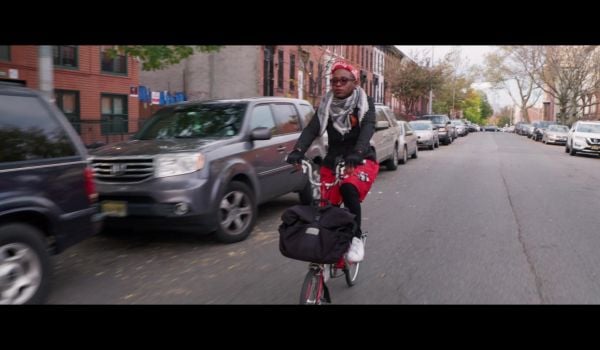Crossing the street in a Vietnamese city is one of the country’s great cultural experiences. You step off the curb into a sea of slow-moving motorbikes and simply walk straight across. The motorbikes gracefully part around you, like air moving over and under an airplane wing, or as if an invisible sphere surrounds you and gently urges drivers to keep away.
In other words, traffic in Vietnamese cities operates much like it did in the U.S. a century ago, when the streets were filled with not only cars and trolleys but also pedestrians, cart-pulling vendors, sauntering livestock, moseying bicycles and horse-drawn carriages, all of it moving in a low-speed, highly alert mishmash of multi-use street space.
Researchers have taken notice of Vietnam’s traffic as a unique phenomenon, studying the almost biological nature of the way it flows. Wired editor Kevin Kelly referenced such traffic patterns in his 1994 book Out of Control, which dealt with the phenomenon of distributed intelligence, or what he dubbed the “hive mind.” Others have drawn links between Vietnamese traffic and schools of fish or swarms of bees. You could even argue that traffic in such cities operates basically like pedestrians do on crowded sidewalks: Though there’s no central command telling everyone where to turn, we mostly avoid bumping into each other. There’s an intuitiveness to how to move, and a general consensus to follow that intuition.
Traffic doesn’t work that way in American cities anymore, which is why the U.S. has ended up with a big debate between warring tribes over who owns which part of the street. How much space should segregated bicycle lanes get? Should some streets be closed off to cars? What’s worse, drivers who cut into the crosswalk or pedestrians who jaywalk? (The answer to that one should be obvious).
It’s unfortunate that we need to have this debate. In Da Nang, Vietnam, where I’ve spent the past week, traffic in the city center moves at an average of 20 miles per hour and consists mainly of two-wheeled vehicles light enough to be lifted off the ground. Because the streets are crawling with pedestrians, drivers are hyper-aware of their presence. A couple of motorbike owners I’ve met (which is virtually everyone — 95 percent of Vietnam’s registered vehicles are motorbikes) professed to have seen almost no serious injuries caused by traffic in the city center. At one point I witnessed two motorbikes gently sideswipe each other and continue on their way without pausing. It’s not that easy to do a lot of damage with a 190-pound bike cruising along at roughly the speed you’d use to pull out of a driveway.
Vietnam does have an atrociously high rate of fatal road deaths, and the issue is a bit different in the two major cities of Saigon and Hanoi, where more cars and more speeding cause more pedestrian deaths. (Memorably, MIT researcher Seymour Papert was struck and killed in 2006 while studying driver behavior in Hanoi).
But evidence suggests that in most of the country’s cities like Da Nang, the shared nature of urban streets isn’t the cause behind most pedestrian deaths. Speeding and illegal passing — both of which tend to be an issue on high-speed arterials, not crowded city streets — cause the most road deaths. Driving under the influence and exhausted driving both account for a lot of fatalities. And the fact that most crashes occur between 7pm and midnight indicates that factors other than traffic patterns are somewhere near the root of the problem.
Still, U.S. cities couldn’t turn their streets into this kind of free-for-all even if they wanted to. Not now, anyway. The era of melting-pot diversity on the nation’s urban roadways has passed. Americans drive cars — big ones — and not motorbikes. They pilot vehicles like mother rhinos separated from their offspring. And they do all this while remaining willfully ignorant of the bipedal creatures in their midst.
Here in Da Nang, whether justified or not, I feel safer strolling amid the lazy river of two-wheeled traffic than I do while being nudged out of a crosswalk by an SUV in Manhattan. As cars continue to catch on as status symbols here in Vietnam, the days of pedestrians and motorbikes mingling in the street may be numbered. For now, the traffic is worth the trip in and of itself.

Will Doig was formerly Next City’s international editor. He's worked as a columnist at Salon, an editor at The Daily Beast, a lecturer at the New School, and a communications staffer at the Open Society Foundations. He is the author of High-Speed Empire: Chinese Expansion and the Future of Southeast Asia, published by Columbia Global Reports.






_600_350_80_s_c1.jpg)









